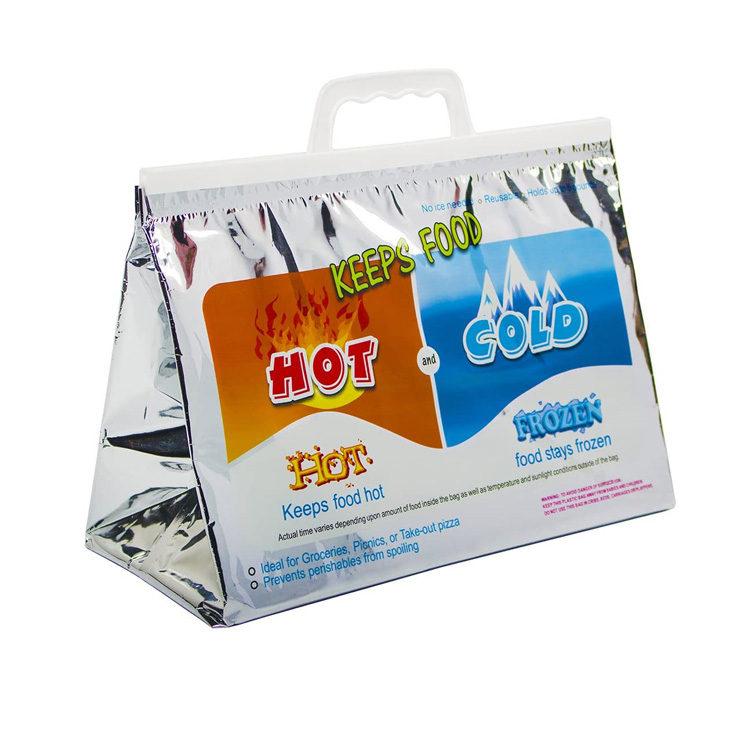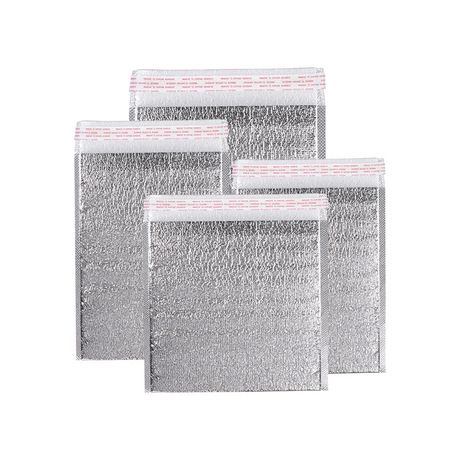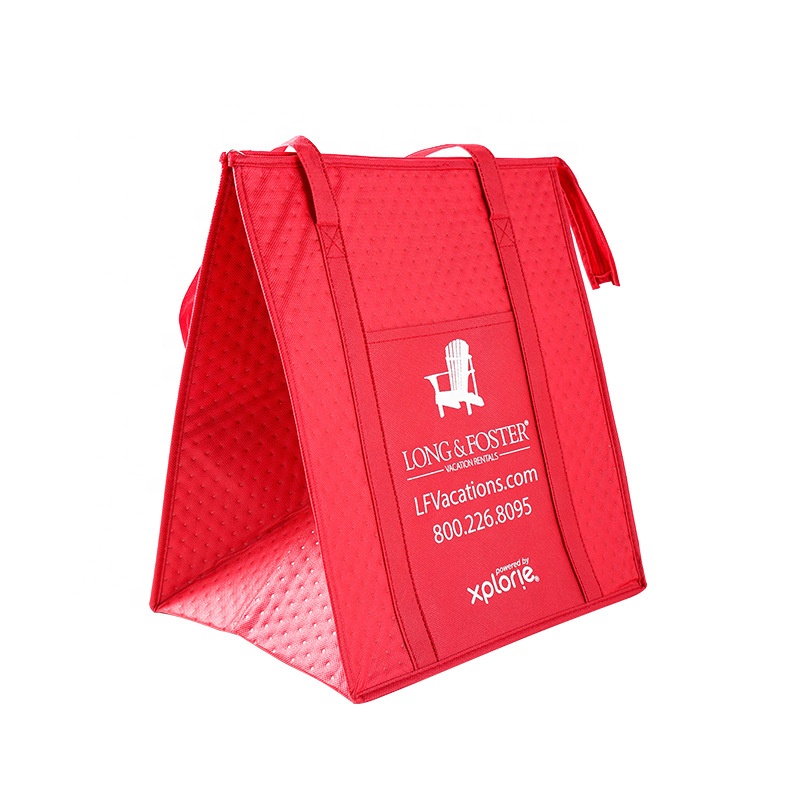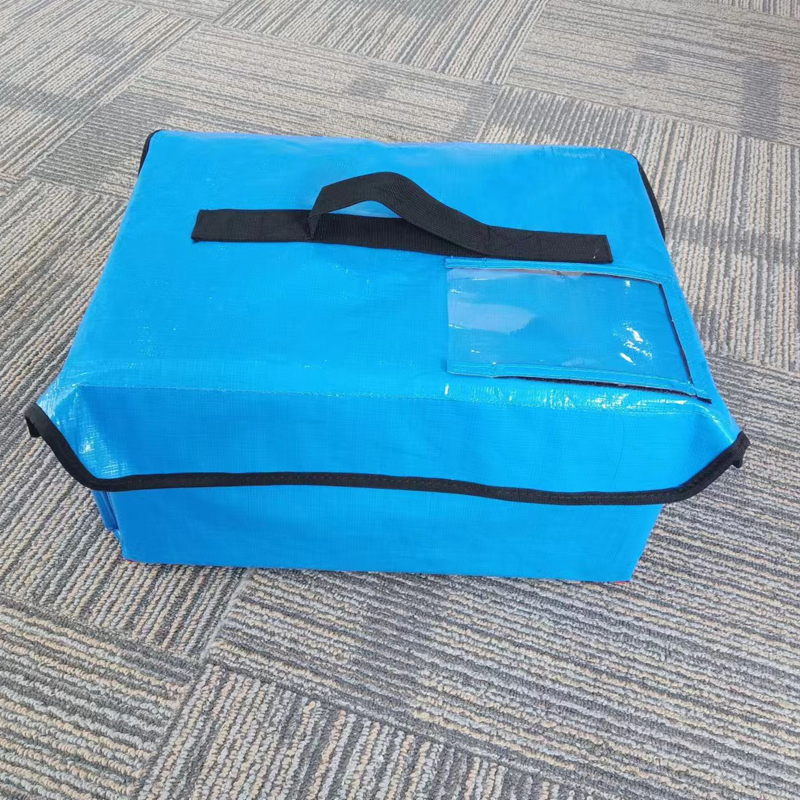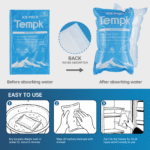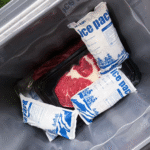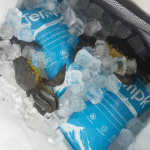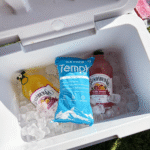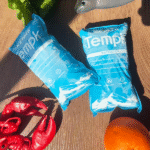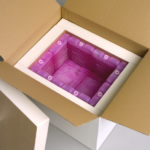استخدام dry ice packs to keep medicine cool can be a life‑saver for long trips, but only if you hit the sweet spot between safe temperatures and frost damage. This guide shows you the exact steps, pack sizes, و 2025 regulations you need to protect every vial.
-
How much dry ice packs you actually need for common medicine loads
-
Which medicines tolerate ultra‑cold temperatures—and which do not
-
Step‑by‑step packing that prevents freeze shock and leakage
-
2025 shipping and airline rules you must follow
-
Proven tips to maximize pack life and safety
How Much Dry Ice Packs Do You Need for Medicine?
Start with 5 lb (2.3 كجم) of dry ice packs per 24 h for a shoebox‑sized insulated shipper. Adjust by ±2 lb depending on outside heat or box thickness. Keep total under 5.5 lb (2.5 كجم) if you fly—FAA rules still cap it at that level.
Dry ice packs sublimate faster in empty space. Fill gaps with bubble wrap or foam inserts to stretch cooling time. For 48‑hour transport of frozen biologics, a 10 lb load in a 20‑qt cooler keeps contents below –20 °C reliably.
Dry Ice Pack Weight vs. Shipment Size
| Box Volume | حزم الثلج الجاف (lb / kg) | Hours Below –10 °C | ماذا يعني لك |
|---|---|---|---|
| 5 ل | 3 / 1.4 | ~18 h | Day‑surgery specimen runs |
| 10 ل | 5 / 2.3 | ~ 24H | Overnight pharmacy delivery |
| 20 ل | 10 / 4.5 | ~48 h | Two‑day biologic shipping |
نصائح عملية
-
Pre‑freeze packs at –80 °C for maximum hold time.
-
Layer PCM bricks (2-8 درجة مئوية) above vials that must not freeze.
-
تنفيس الشاحن; CO₂ gas needs an escape path.
حالة حقيقية: A biotech firm shipped monoclonal antibodies at –75 °C for 36 h using 8 lb of dry ice packs in a 12 L VIP cooler—arrival temperature was –72 °C with zero vial breakage.
Will Dry Ice Packs Damage Temperature‑Sensitive Medicine?
Yes—if the medicine only needs 2–8 °C, direct contact with –78 °C packs can freeze and ruin it. Use a buffer layer: phase‑change gel packs or a 1‑inch foam spacer. Medicines labeled “keep frozen” (–20 °C or below) are dry‑ice friendly; most vaccines and insulin are not.
Medicine Storage Range Reference
| Medicine Type | Safe Range | Dry Ice Compatible? | الوجبات الجاهزة |
|---|---|---|---|
| Insulin | 2-8 درجة مئوية | ❌ | Use PCM or refrigerated carriers |
| mRNA vaccine | –90 °C to –60 °C | ✅ | Dry ice required |
| Monoclonal antibody | –25 °C to –15 °C | ✅ | Requires buffer layer |
| Reconstituted antibiotics | 2-8 درجة مئوية | ❌ | Use gel packs, not dry ice |
User‑Focused Tips
-
For refrigerated meds: Place them in a small cooler with +4 °C gel packs, then nest that cooler inside the dry‑ice shipper.
-
For frozen meds: Add a cardboard shelf between packs and vials to prevent glass cracking.
-
للأحمال المختلطة: Segregate each temperature tier in separate, labeled bags.
How Do You Pack Medicine with Dry Ice Packs Correctly?
-
Wear thick cryo‑gloves; dry ice burns skin instantly.
-
Line the bottom of the shipper with a corrugated board.
-
Add one layer of dry ice packs, then a buffer sheet.
-
Place medicine in a sealed pouch with a temperature probe.
-
Top with more packs, leaving half‑inch headspace.
-
Close but do not seal air‑tight—pierce two 3 mm vent holes.
-
Label the box ”الثلج الجاف (≤2.5 كجم), UN1845, Class 9.”
Interactive idea: Use our Pack‑Size Calculator to get the exact weight in 30 seconds.
2025 Dry Ice Medicine Shipping Rules and Innovations
Airlines now allow online pre‑approval for dry‑ice medicine kits, trimming airport check‑in by 15 minutes on average. Lightweight carbon‑composite packs launched this year cut sublimation by 18 %, while portable Bluetooth CO₂ sensors under $25 alert you if gas builds up in your car trunk.
أحدث النقاط البارزة
-
Smart CO₂ vents auto‑release pressure above 5 psi.
-
Aerogel‑backed packs extend hold time by up to 20 %.
-
Reclaimed CO₂ from bio‑ethanol plants lowers pack carbon footprint.
نظرة السوق: Global demand for ultra‑cold pharma logistics grew 12 % in 2024, led by cell‑therapy trials and mRNA booster campaigns.
الأسئلة المتداولة {#التعليمات}
س: Can I fly with dry ice packs and prescription meds?
Yes—stay below 5.5 lb, inform the airline, and vent the container.
س: كم من الوقت تستمر عبوات الثلج الجافة?
Roughly 18–24 h per 5 lb, اعتمادا على العزل والحرارة المحيطة.
س: How do I dispose of leftover packs?
Let them sublimate in a well‑ventilated area away from kids and pets.
س: Are gel packs safer for insulin?
قطعاً. They hold 2–8 °C without freezing risk.
ملخص & الوجبات السريعة
Dry ice packs can keep medicine cool—or frozen—when matched to the right temperature range, pack weight, and buffer layers. Know your medicine’s safe zone, follow airline weight caps, تنفيس الشاحن, and use spacers to avoid freeze shock. Do that and every dose arrives potent.
ماذا تفعل بعد ذلك
-
Run our Pack‑Size Calculator to find your ideal ice weight.
-
Grab vent‑ready shippers from Tempk’s medical line.
-
شارك هذا الدليل with colleagues to avoid costly spoilage.
حول expk
We engineer insulated shippers, الطوب PCM, and smart data loggers that safeguard pharmaceuticals for up to 120 hours. Our CNAS‑accredited lab stress‑tests every design, giving you proven reliability for clinics, trials, and last‑mile delivery.
Need custom advice? Talk to our cold chain team اليوم.










